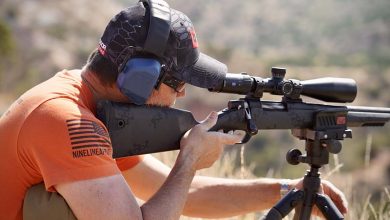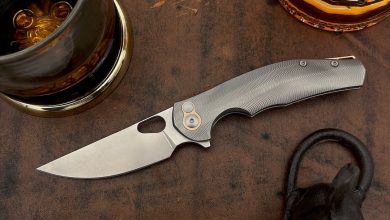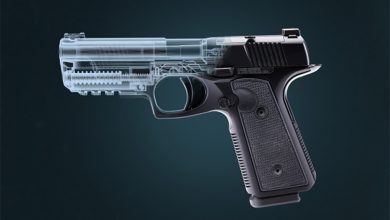TFB Review: Pulsar Thermion 2 XG50 LRF 3-24x Thermal Riflescope
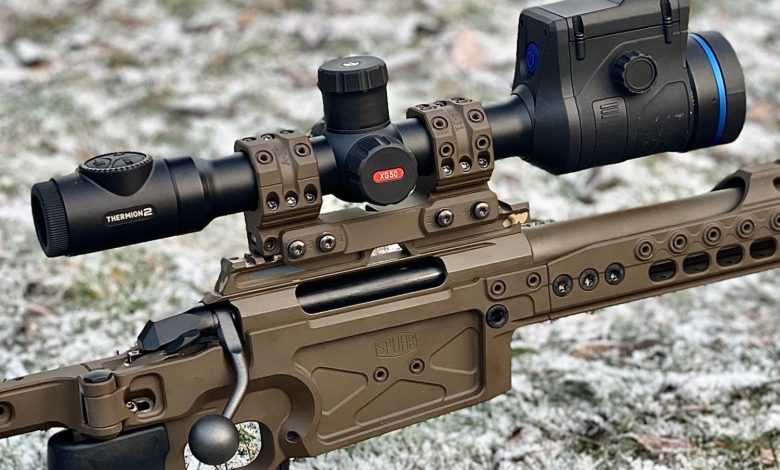
This is a review of the Pulsar Thermion 2 XG50 LRF Thermal Riflescope. It uses the same dimensions and layout as the other Thermion 2 LRF devices, and comes with a 640×480 @ 12 µm thermal sensor with an NETD of
Pulsar Thermal Riflescopes & Clip-Ons @ TFB:
Below: The Tikka TAC A1 6.5 Creedmoor in a Spuhr SICS chassis looked and worked great together with the Thermion 2 XG50 LRF.
Review Pulsar Thermion 2 XG50 LRF
The regular price is in the region of $6,200, and it’s Made in Europe, with a Lynred sensor. While this is a lot of money, it’s difficult to find anything better in that price range.
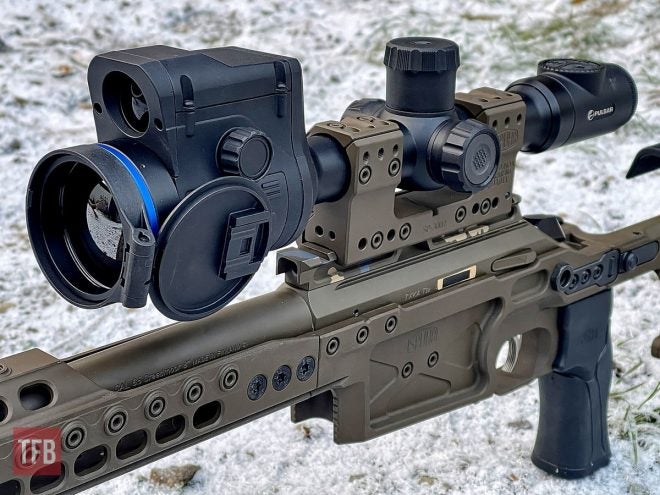
The detection range is quoted at 2300 meters.
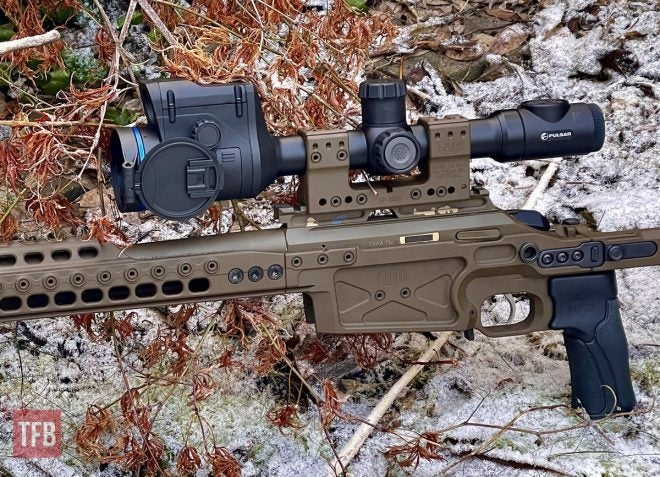
The XG50 runs a 12 µm pixel pitch sensor. These sensors are suitable for shooting at longer distances in normal thermal contrast conditions.

The base magnification of Thermion 2 LRF XG50 riflescopes can be increased by eight times up to 24x. The zoom changes either gradually in 2x steps or continuously offering the ideal ratio of magnification and visible field of view for specific situations.
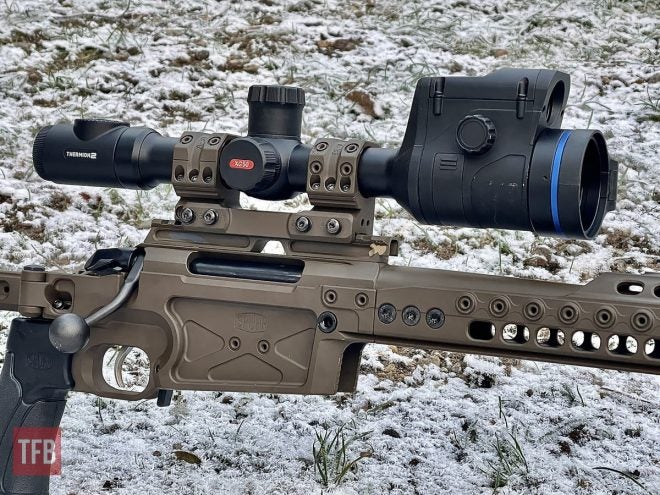
To get technical: NETD is the smallest difference in temperature a detector can pick up. It corresponds to a signal-to-noise ratio (S/N) of 1: when the temperature difference is equal to the noise, the detector has reached its limit. It’s like a “thermal contrast”. The lower the NETD is, the more sensitive the detector. This Pulsar runs at NETD of
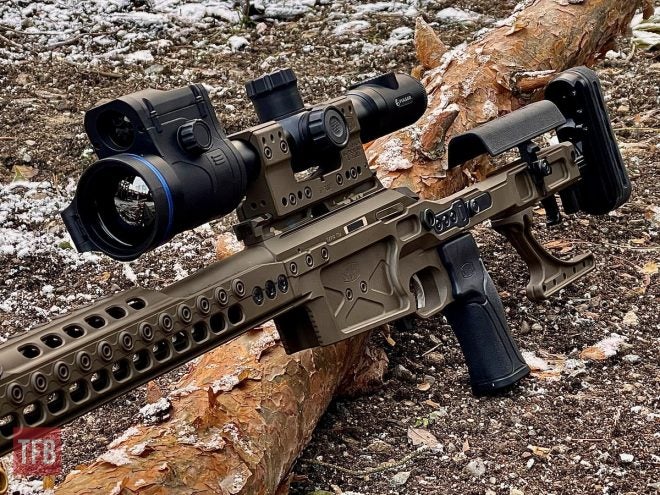
Review Pulsar Thermion 2 XG50 LRF
Very few things, if any, stand out as disappointing.
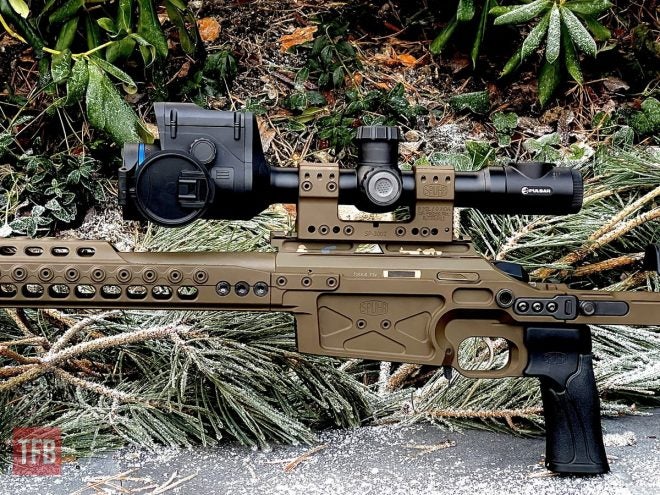
The only real issue I have is that the scroll wheel (on the left side/turret) sometimes goes one click further than I wanted, as I click the confirm button.
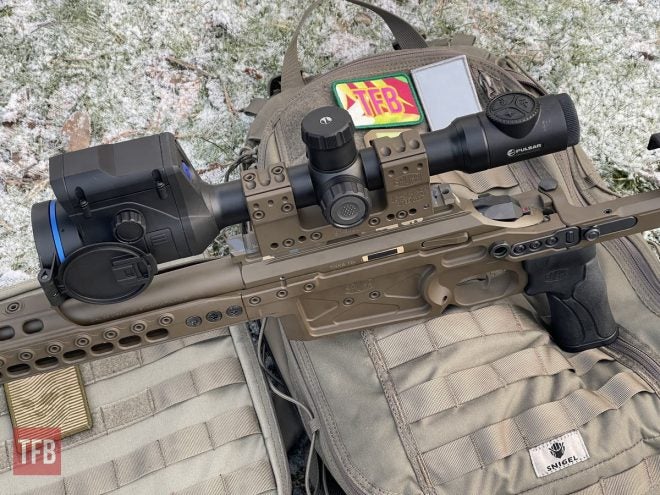
The Thermion 2 models have an internal battery as well as an interchangeable, rechargeable one. Changing the external batteries is very easy, even in darkness. You can use an external power supply via USB as well.


Digital optics are here to stay. You can customize colors and reticles, and much more.
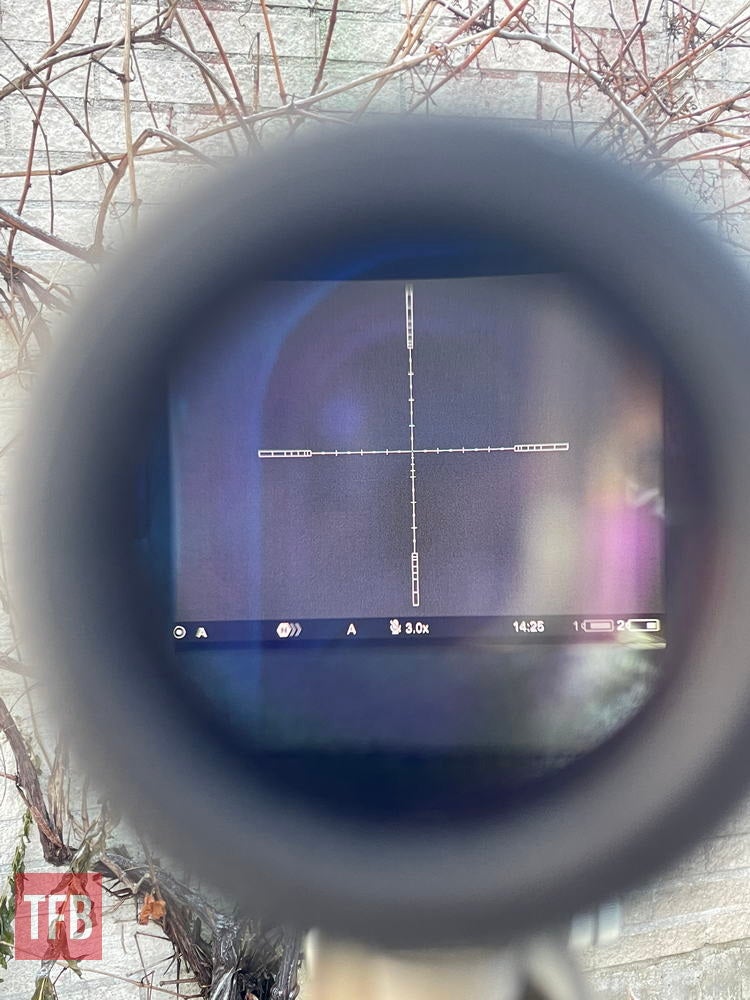
Image Quality
With an NETD of
Wild board at the feeder, short range. In fact, the image is a little bit out of focus here.

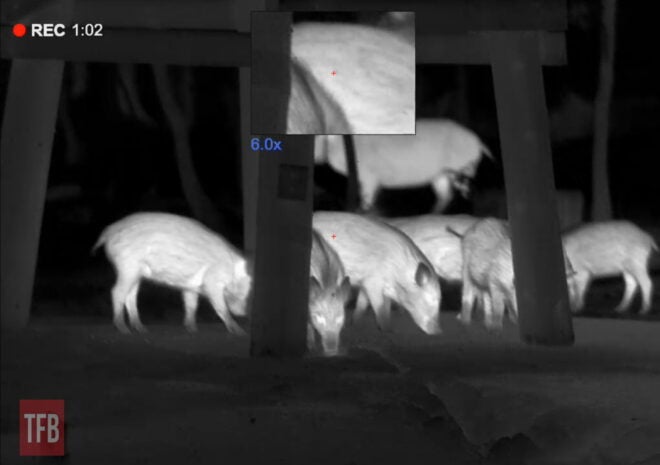
Wild boar, coming from the forest out on a field in heavy rain (hence the image quality is a little blurry). I got quite wet, so hope you like it as much as the pigs did.
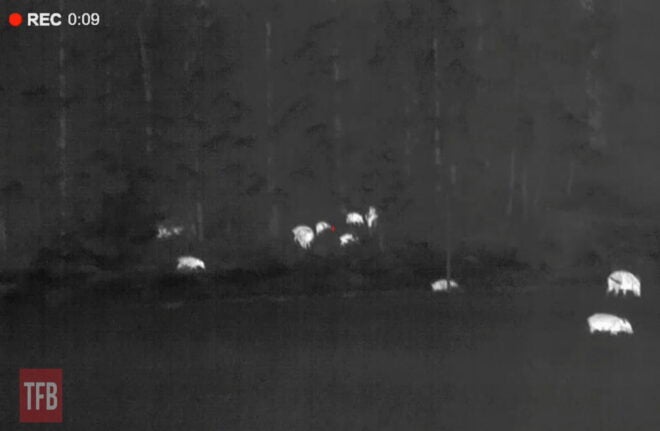
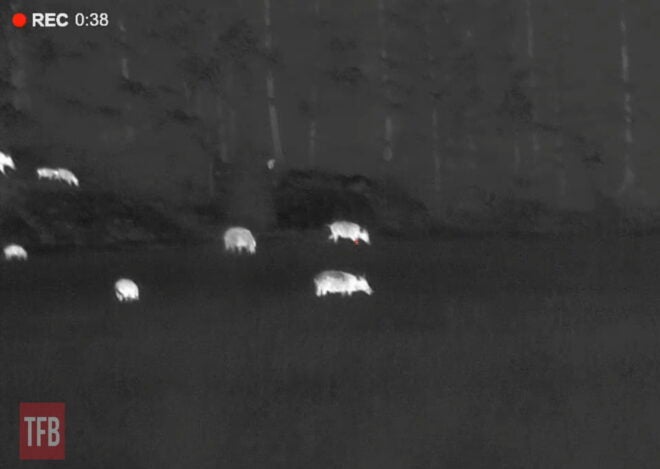
With the “Picture-in-picture” mode, the shooter can display a small magnified image at the top of the screen for precise aiming. This feature provides a magnified view of the target and reticle while maintaining visual control of the entire field of view. In this LRF model, the small window is also used for aiming when the LRF function is activated. During LRF ranging, the reticle on the main screen disappears and reappears once the ranging is complete. Unfortunately, due to the heavy rain, I could not make the LRF work – this isn’t uncommon for any LRF. If you have the ballistic software installed, you would then also get the correct holdovers.
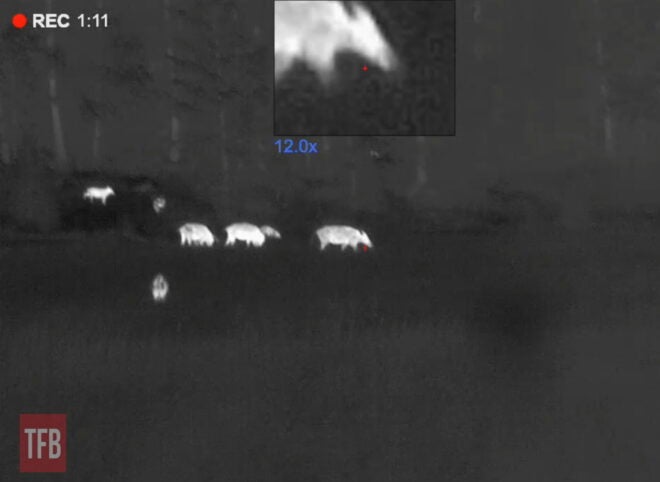
Red deer

This deer had some issues with its leg. With a thermal these kinds of issues are very easy to spot.

The Thermion 2 LRF XG50 has three sensitivity levels: Normal, High, and Ultra. These can be adjusted to match the conditions during the hunt. I know I shouldn’t, but I tend to go for Ultra most of the time. The side effect of signal amplification (as with Ultra) is the increase of noise in the image, however, most of the time your intended target will stand out more.


A fox with a baby fox, playing around (also see video).
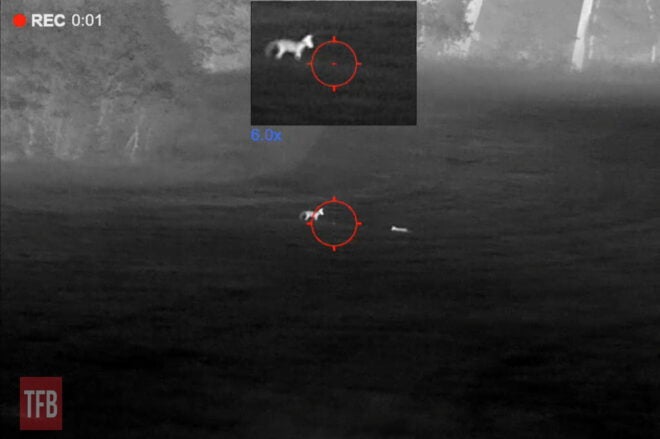
Below: horse at around 40 meters. The riflescope is not attached to any firearm.
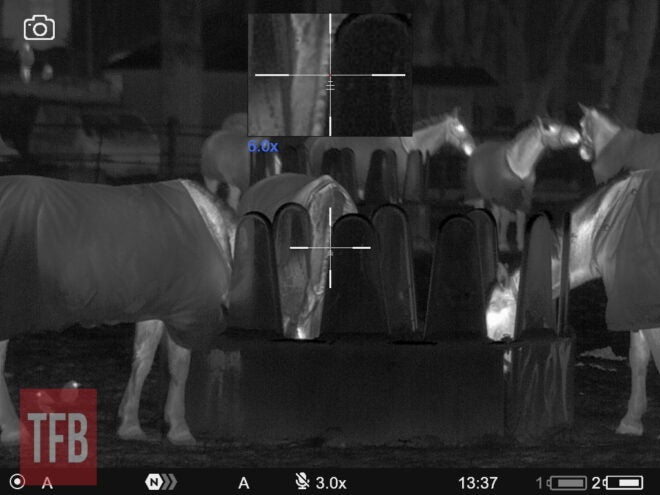
Conclusion
It’s difficult not to like any of the Pulsars in the Thermion series. To drop around $6,200 on any optic is kind of crazy, but the Pulsars seem to keep their value well. I never had any issues getting rid of my old ones when I wanted to upgrade, the second-hand market seems very strong. For those who want (or must) avoid devices made in China, it’s a safe bet to choose Pulsar instead, as they’re made in Europe, with European thermal sensors.

Another benefit is the quick start-up time from cold, and that Pulsar keeps on developing the firmware with new functionalities and increased image quality by improved algorithms. In most cases that would mean you’re getting an “undeveloped” product out of the box, but that’s not how I ever felt about it. My devices have always been stable as well. The Pulsar firmware is more like getting a face-lift for free for your vehicle, in your mid-term ownership – and nothing is forcing you to do them.

The best example is probably Pulsar’s new firmware (update 3.3) that enabled ballistic calculations inside Thermion 2 riflescopes without the built-in laser rangefinder (works on the Thermion 2 XG50 model).
If you haven’t used a laser rangefinder for your thermal, it’s certainly time to begin. Estimating distances is hard enough with normal optics, and in the dark nothing gets easier. By using the Stream Vision 2 app, you also get ballistic calculations inside the riflescope, with hold-overs suited for your ammunition and rifle.
If you have a little less to spend, take a look at the Thermion 2 LRF XQ50 Pro, with a smaller 384×288 @ 17 µm (NETD
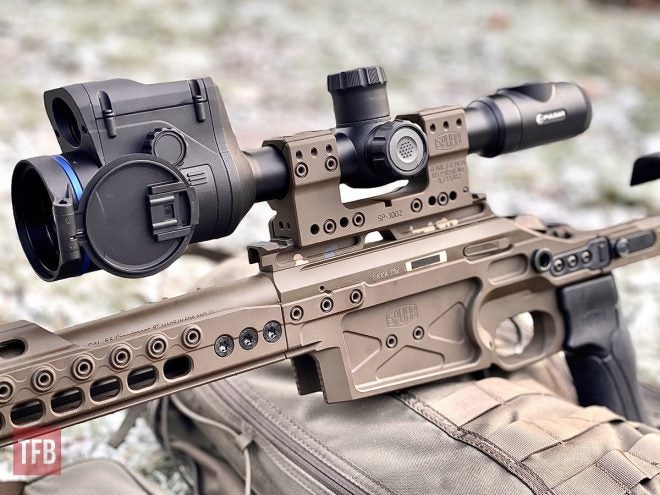
Personally, I don’t do any long-range hunting at night, so the Pulsar Thermion 2 XG50 LRF 3-24x is not really for me. There are other models that suit my needs better, with a lower base magnification. However, if you’re hunting predators and protecting your farm, you should take a serious look.
We are committed to finding, researching, and recommending the best products. We earn commissions from purchases you make using the retail links in our product reviews. Learn more about how this works.



